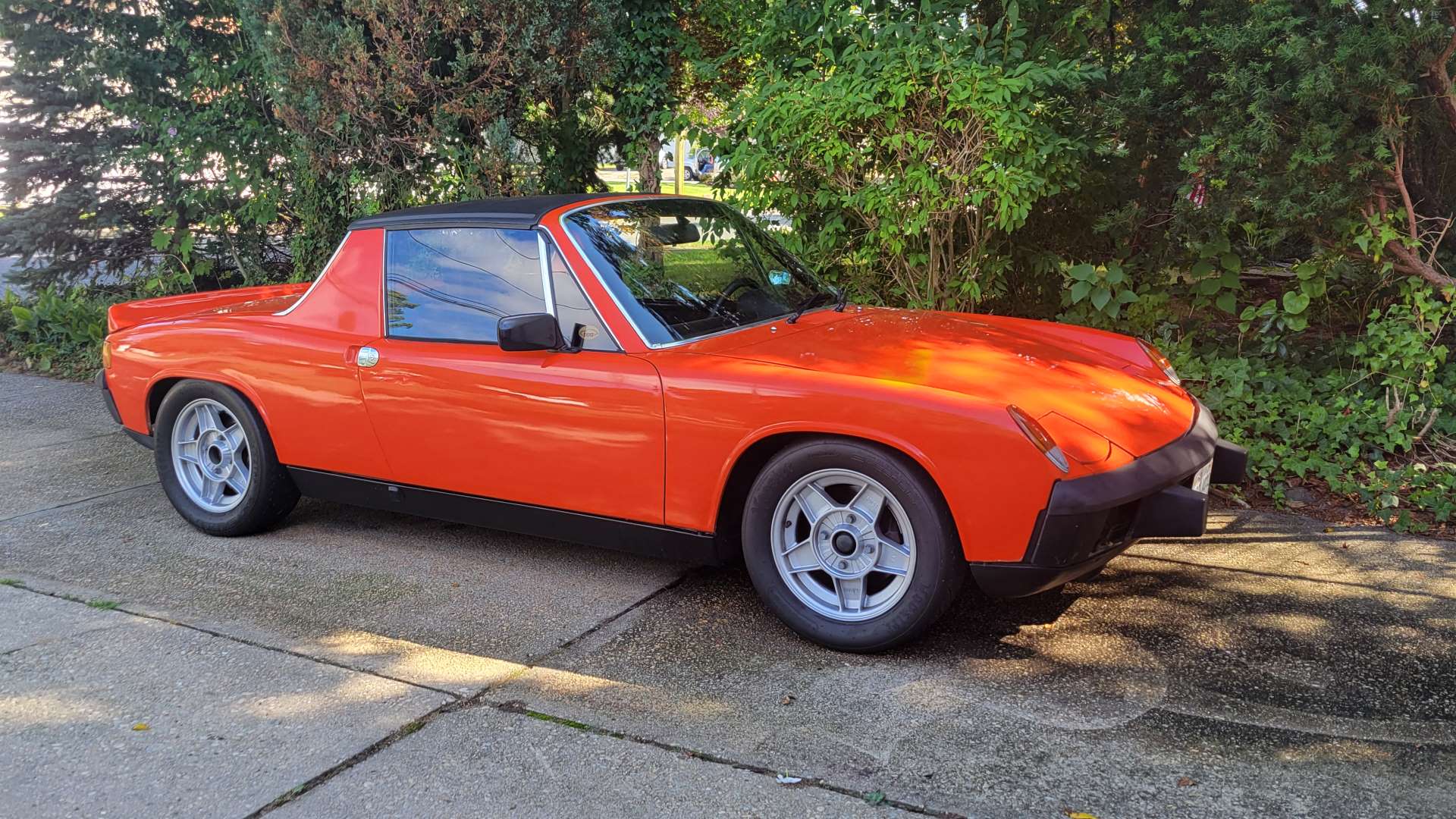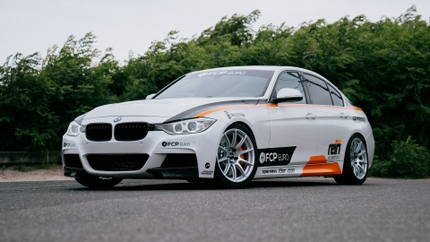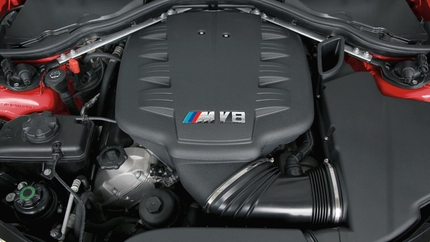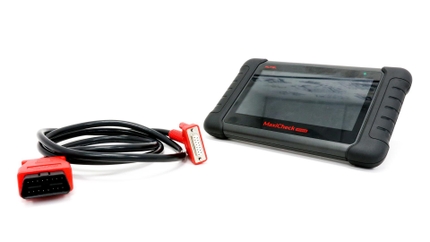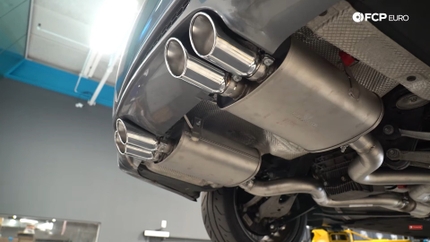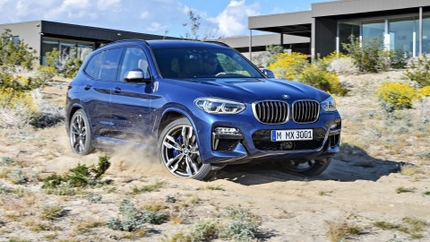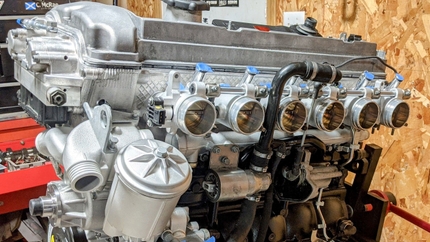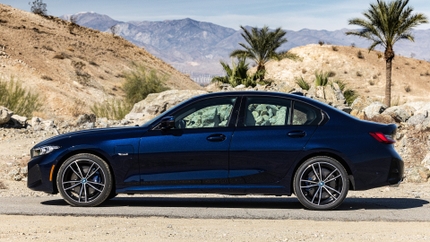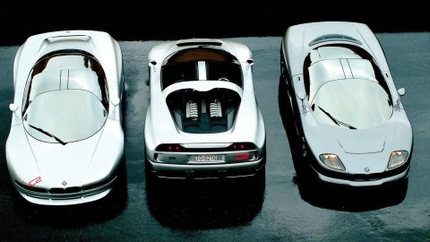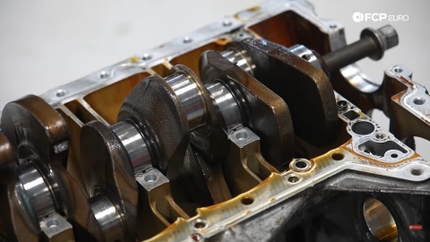With the dawn of electric and hydrogen-powered cars upon us, mechanically simple cars simply no longer exist. Today, a computer is the best tool for fixing a modern vehicle, when forty years ago it was a box wrench. The current technology has made cars safer, more fuel-efficient, and monstrously fast, but there’s something still to be said about the simplicity of a bygone era—back when cars were simple, mechanical, and free of Apple car play. They offer a feel that nothing produced in the last decade can come close to matching and include a sense of accomplishment for those keeping them alive. The general public seems to have become aware of this as vintage models are gaining popularity and value, though there are still plenty for less than a used 3-series. Are they Pebble Beach ready? No, but they’ll deliver a similar experience for significantly less.
Volkswagen Scirocco Mk2
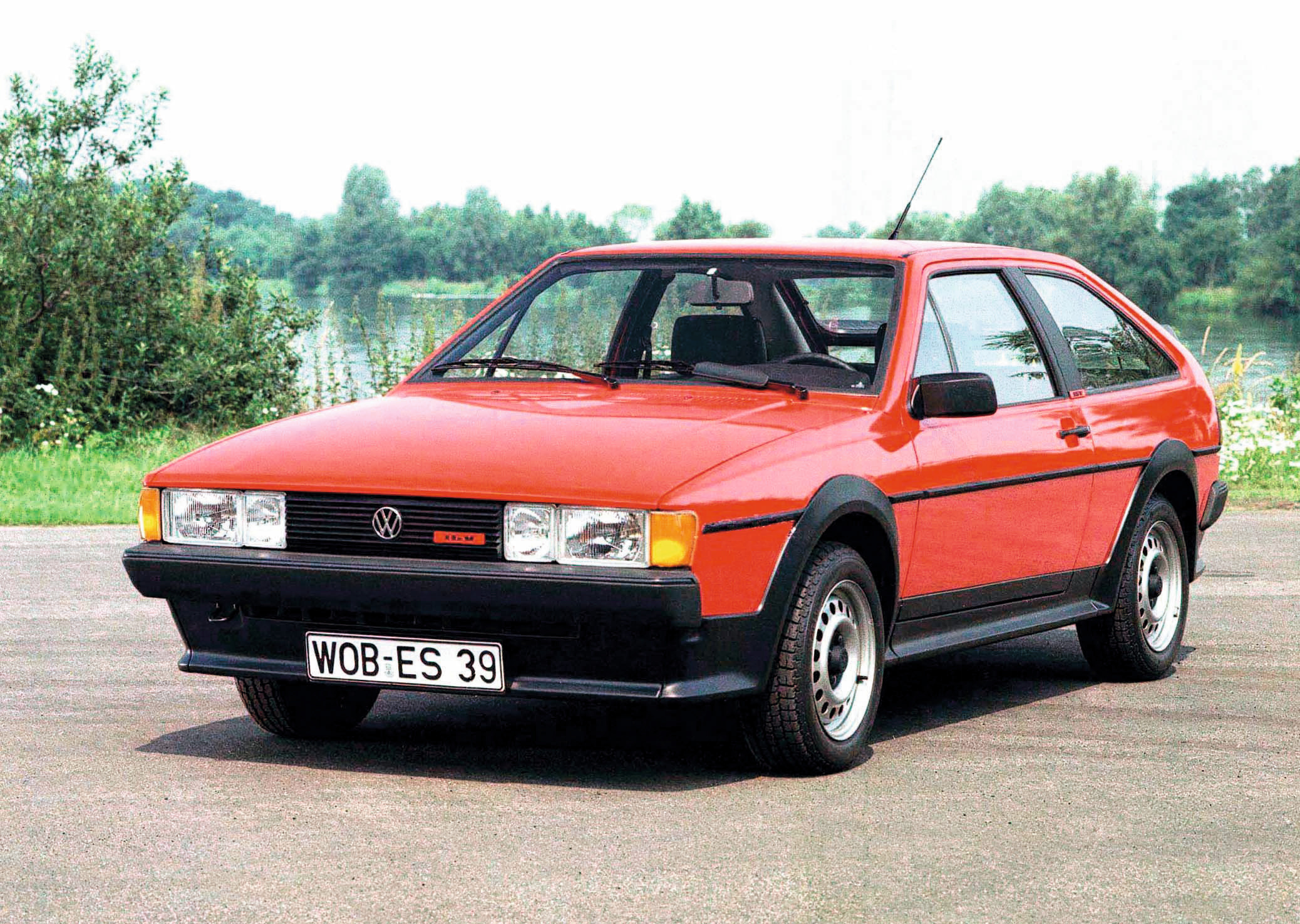
Volkswagen went through a bit of a corporate shake-up in the mid-seventies when their director changed suddenly after a death. The company refocused itself, and in the process, chose against the Porsche-designed “EX-425,” choosing to produce a Golf-based sports car instead. Giugiaro styled its body, but it shared its underpinnings with the rest of the Volkswagen family, making it cheap and good-looking. It also shared its drivetrain with the golf, with certain models receiving the engine from the original GTI. The second generation appeared in the US in 1981 and ran through 1988, marking the end of the Scirocco in the US.
For the second generation, VW altered the Giugiaro design for a more rounded shape, relatively speaking, and enlarged the body for more interior space. However, it remained on the same chassis underpinnings as the first generation. That helped VW save costs by allowing them to continue their suspension design from the previous generation. The Mk1 design heavily influenced the Mk2, which was more of an extensive refresh than a new design. The headlights became square, the rear received a spoiler, and the shape of the windows changed, at least initially.

Under the bonnet is a 1.7L inline-4 cylinder engine with an 8-valve, single-overhead-camshaft cylinder head. Combined with Bosch’s K-Jet fuel injection, the VW engine produced an enormous 74. However, midway through 1983, VW debuted the Wolfsburg edition, sporting a 1.8L 8-valve that produced 90 horsepower. That remained the only engine option until the 1986 model year when the Scirocco received the double-overhead-camshaft 16-valve engine from the GTI with 123 horsepower. Both the 8-valve and 16-valve were available until the Scirocco left US shores after 1988.
When the Mk2 hit the showroom floors, not much had changed from the Mk1. Sure the body and interior were new, but the drivetrain, suspension, and brakes remained the same. That is until the Wolfsburg edition appeared halfway through 1983. The engine grew to 1.8L, leather seats became an option, a close-ratio five-speed manual transmission was attached to that bigger engine, and front and rear sway bars were fitted as standard.

The Scirocco 16v was the first time the US model could genuinely be considered a sports coupe. Its new engine propelled the hot hatch to sixty miles an hour in eight seconds flat, a very competitive feat for its time. To go with the extra power, VW fitted some different bodywork. Like the Countach, the sides grew wider with wheel arch extensions and a deep skirt, the nose got lower with a prominent chin spoiler, and the rear featured a rear valance to match. It also received larger brakes and a larger rear sway bar, rounding out the transformation to a hot hatch.
The Scirocco carried on until 1988 when VW pulled it from the US due to poor sales. The Mk2 ended altogether in 1992, eventually being replaced by the Corrado. Regardless of their poor sales performance, the Scirocco remains a prevalent platform for the VW crowd. Parts are very interchangeable from later models, and the aftermarket gives relatively strong support. Engine swaps are also quite common, with many choosing the VR6 from later Golfs or Passats.
Picking up a driver quality Scirocco, one that runs and drives as it should but may have a few cosmetic imperfections, can be done for under $10,000, even for a 16v which will command more money. Look around, and you’ll find the cleanest examples sitting around the $15,000 mark. When you are looking, watch out for rust. The Mk2 chassis is better than the Mk1, but botch shock towers, the floor, and the windshield cowl all like to get ugly. Beyond that, you’re looking for properly functioning electricals and non-perished hoses and lines in the engine bay.
Porsche 924/944

The 924 was never supposed to wear a Porsche badge. Though designed by Porsche, it was for a contract with Volkswagen for a new entry-level sports car. At the last minute, VW bailed, choosing to focus on the Scirocco. Needing something just like it, Porsche bought back the design and used it for their new entry-level car, replacing the 914 and 912E. The water-cooled, front-engine design was all-new for Porsche, but what came of it was fifteen years of a very competent sports car that helped the company navigate some of its most challenging financial times.

Under the hood of the 924 is a normally-aspirated 2.0L inline-4 cylinder Audi engine wearing a Porsche-designed cylinder head. Fuel is provided by Bosch’s K-Jet fuel injection system giving the 924 a screaming 110 horsepower. The 1976 model used a 4-speed manual transmission, though every year after used a five-speed. A three-speed automatic was available halfway through 1977. Porsche continued to use the front-engine, rear transaxle layout in the 944, giving both chassis arguably better handling performance than the 911 from its day.

Porsche, unhappy with the performance of the 924 and concerned about the 924 Turbo’s high cost, developed the 944. They took the existing body and made the fenders and quarters wider to fit larger wheels and brakes. The Audi engine made way for a Porsche-designed 2.5L inline-4 cylinder that produced 161 horsepower. Halfway through 1986, the 944 received an updated interior, larger oil sump, larger gas tank, and minor suspension revisions. 1987 saw the 944S hit our shores, utilizing a 16-valve, dual-overhead-camshaft cylinder head to give it 26 more horsepower than the base car. Two years later, Porsche dropped the base 944 and introduced the 944 S2 as the only naturally-aspirated model, using the engine from the 944S now punched out to 3.0L.

Both the 924 and 944 had Turbo variants. Like the 911, they used larger brakes, stiffer suspension, and heavier duty transmissions. The 1987 944 Turbo was the first Porsche fitted with driver and passenger airbags as standard, though they were optional on the lower models. Standard too was Bosch ABS, again an option for the lower models. Even without that safety equipment, the 924/944s are very usable. Their back seats have enough space for a smaller passenger, and the enormous rear hatch leaves plenty of room for cargo.
For decades, owners of 924/944s have known that it is the superior chassis for outright handling performance compared to the 911. The front-engine, rear transaxle layout gave them a near 50/50 weight distribution, and the power of the Turbos, both 924 and 944, made them nearly as fast as the 911SC of the same era. Either chassis makes a great race car in normally aspirated or turbocharged form.

The Porsche market is currently red-hot, and the 924/944 has seen some effect from that. However, they were so cheap previously that their current going rate between $7000 and $12,000 for driver-quality N/A models is still very affordable for the vintage car market. When looking at examples, previous maintenance records are vital. The non-turbo engines are all interference engines, so the condition of their timing belt and its components are critical. Higher mileage and more neglected examples likely have their original suspension bushings. Replacing them isn’t very costly and will significantly improve the handling feel and help eliminate any clunks in the suspension. Rust issues aren’t pervasive with them, but it is still something to check.
Saab 900 Turbo

The classic Saab 900 Turbo carried Saab’s performance car flag for twenty-five years from 1978-1993. The two-door hatchback went through a few updates over its production, seeing its performance increase to keep up with its newest competitors. From start to finish, the 900 Turbo was built on a modified Saab 99 chassis, its direct predecessor. Saab stretched the 99’s wheelbase, updated the crash protection, and revised the front suspension to create the 900. The 900 Turbo was offered right from the start of production, carrying on from the successful 99 Turbo, and was available in 3-door and 4-door body styles until 1986, when the convertible debuted.
Under the huge clamshell hood, the 900 Turbo sports Saab’s 2.0L turbocharged inline-4 cylinder. Between 1978 and 1982, the earliest models used an 8-valve, single overhead camshaft cylinder head design, helping that 2.0L produce 143 horsepower and 173 torques. By 1985 the Turbo received a new 16-valve, double overhead camshaft cylinder head and an electronic boost control system Saab called APC. The Automatic Performance Control system used a knock sensor, among others, to determine boost and timing in conjunction with the gasoline being burned. Combined with the 16v head, the new engine pumped out 165 horsepower and 188 torques. All engines utilize a five-speed manual that sends power through the front wheels.

Starting in 1984, Volvo offered a high-performance special edition of the Turbo, dubbed the SPG in America. It received a stiffer and lower suspension, front and rear sway bars, a full leather interior, and a unique body kit. Under the hood, it used the same 16v engine as the standard 900 Turbo but produced 175 horsepower and 195 torques in its final form. Just over 7500 SPGs were made, so they’re much less common than the standard Turbo. Many of the performance benefits of the SPG can be fitted to a standard 900 Turbo, too. Since they share many components, both are capable of handling modest power increases on the stock components.
The 3-door hatch is the most common body style available in the US, the third door being the hatchback. What you get with that is a roomy interior that fits four people comfortably. The hatch opens up from the top of the bumper, revealing a large trunk made bigger with the fold-down rear seats. While not the best for performance, the front-wheel-drive layout was great in its day and makes for an excellent backroad cruiser today. Saab went bust in the fallout of the 2008 financial crisis, but parts are still being made. The 900’s long life gave way to a vast market for parts, many of which aren’t too hard to acquire.
As the vintage car market seems to be accelerating quicker than a 900 Turbo, these Swedish machines are staying grounded. Driver quality 900 Turbos and SPGs list for between $7000 and $12,000. If you’re looking for one, it's a pretty common commodity on auction websites like Bring A Trailer and Saab-specific forums. We’d recommend seeing a potential purchase in person as even the best driver examples aren’t resigned from rust issues. Other things to look out for are transmissions that don’t say in gear and electrical problems.
BMW 5-Series E28

BMW’s second-generation 5-series, known as the E28, was produced from 1982 to 1988. BMWs from this era are an excellent choice for vintage car ownership, no matter the series, but personally, the E28 is the top dog. Its lines are fantastic, the engines are robust and sound great, parts are plentiful, and they can be real head turners.
Every US-market E28 received a gasoline-powered inline-6 cylinder engine, except for the 524td, which used a turbo-diesel. The low model in the US line-up was the 528e. During the early eighties, BMW was concerned that their vehicles weren’t going to meet the average fuel economy requirements set in the US, so they released the 528e, the “e” standing for eta, economy in Greek. The fuel saver model used an M20-based naturally aspirated engine displacing 2.7L and made around 125 horsepower, depending on the model year. BMW designed the engine for good economy and lots of low-end torque, fitting it with a smaller cylinder head, softer valve springs, and smaller camshafts. Its rev-limit of 4,800-rpm is very odd by BMW engine standards, but the car sold well enough that it remained in the lineup for the E28’s entire run.

The two non-eta models offered during the E28’s run, the 533i and 535i, used larger, M30-based normally aspirated inline-6 cylinder engines. Displacing 3.2L and 3.4L respectively, these engines are classic BMW; torquey but rev-happy, using a single-overhead-camshaft design and two valves per cylinder. Both engines made a bit over 180 horsepower, but the extra displacement in the 535i helped its engine make 214 lb-ft of torque, twenty more than the 3.2L. Behind these engines was either a ZF-built automatic transmission or a Getrag-built five-speed manual gearbox. The autos were three-speed units until 1984 when they became four-speed boxes.

Although the E28 was the first generation to see the M5, the chassis isn’t the best for wheel-to-wheel action. For similar money, an E21 or E30 would be a better choice. However, with a bit of work, they can be great on backroads and highway cruises. The suspension is very well engineered but contains a significant amount of bushings that cause clunking and a shimmy when worn. Regardless of the average E28’s age, the bushings in the tension struts are a common wear item. Both OE replacements and aftermarket upgrades are available for these pieces and the rest of the suspension. Externally, the best thing you can do for an E28 is hurling the US bumpers into the trash and replacing them with European bumpers. Replacing them isn’t the most straightforward job in the world, but it transforms the way the car looks.
You won’t have trouble finding an E28 if you aren’t looking for an original M5 or the limited 535is. Driver quality examples fall right around the $10,000 mark, with rougher examples close to half that. Speaking of rough examples, there are a few things to look out for. Like every car on this list, rust is a concern, specifically at the rockers, shock towers, floor pan, door bottoms, and valances. The electronics can be a little wonky, too, though the fixes are usually relatively straightforward. E28 specific forums are your friend; they’ll have all the info you need down to the nitty-gritty.
Volvo 850 Turbo

We wouldn’t be shocked if you didn’t think of Volvo’s humble 850 sedans and wagons as enthusiast vehicles. However, the 850 Turbo models, the T5s, provide an excellent base for a fun autocross machine or a big-turbo highway monster. Those models, available in three distinct trims, hit the US shores in 1993 and ran through the end of the 850 series in 1997. However, even though we're talking strictly about the Turbo models here, we're well aware that you can build a naturally aspirated ripper too.
In 1993, Volvo released the 850 T5 with a 2.3L turbocharged inline-5 cylinder engine under the hood. Unfortunately, all T5s came equipped with a four-speed automatic transmission in the US, though other countries got five-speed manuals. However, that 2.3L turbo engine pumped out 222 horsepower and a nearly identical torque figure, just shy of the M3 of that era. Externally, only five-spoke wheels and a small trunk-mounted spoiler give away its turbocharged heart from its normally aspirated siblings.

Around the time the 850 T5 made its debut, Volvo decided it needed a presence in motorsport, so they put the 850 into the British Touring Car Championship. It performed well enough, but they then decided that the standard T5 wasn’t quick enough and developed the T5-R. Also offered with only a four-speed automatic transmission, the T5-R was co-developed by Porsche. Their expertise extended to the suspension and engine, which featured stiffer shocks, larger sway bars, bigger and wider wheels, and a re-tuned ECU for more power. The new model produced 240 horsepower and hit sixty miles per hour in under seven seconds. Externally, a new front lip, side skirts, and spoiler helped distinguish the T5-R from the other 850s.
Volvo, capitalizing on the success of the T5-R, unveiled the 850R in 1996. Based on the T5-R, the new model bumped performance even further, now producing 250 horsepower and 258 torques. Volvo also made some minor improvements to the suspension to improve it on a wider variety of roads. Once again, however, the 850R was only available in the US with a four-speed automatic transmission.

All three of these cars came equipped with manual transmissions in other markets. The transmissions used are widely available, and conversions are pretty commonplace. No transmission swap is easy, but several Volvo forums have the steps required to work as Volvo intended. Once mated to a manual transmission, the B5234T engine found in the 850s can be pushed beyond stock. The turbocharged inline-5 cylinder responds well to modifications and has a reasonably stout stock bottom end. Parts like bigger intercoolers, an ECU tune, and freer-flowing intakes and exhausts are the easiest way to get to bigger power.

All of the turbocharged 850 models are available on auction websites and forums for well under $10,000. They were family sedans nearly thirty years ago, and that hasn’t changed. Search around the forums, and you might find a manual-swapped 850, too. Even if it is swapped, however, there are still some things you should check out before pulling the trigger. The PCV system is known to get clogged and cause the crankcase pressure to push oil out of the rear main seal, check for oil around the back of the engine, and listen for a light whistling while the engine is running. Smell for coolant in the cabin, the heater matrix is a common failure on the 850, and it’ll leak small amounts of coolant under the dashboard. Lastly, blue smoke out of the exhaust likely means an issue with the turbocharger. That’s not a killer problem, but one that will need addressing.
The simplistic characteristics of a car designed before the turn of the millennium offer a feel unmatched by today’s technology-packed examples. Their relative mechanical and electrical simplicity makes them great to drive and fun to work on. So what do you think? Did we miss an obvious choice? Let us know in the comments below! Subscribe to our YouTube channel and keep following the blog for more great content.

